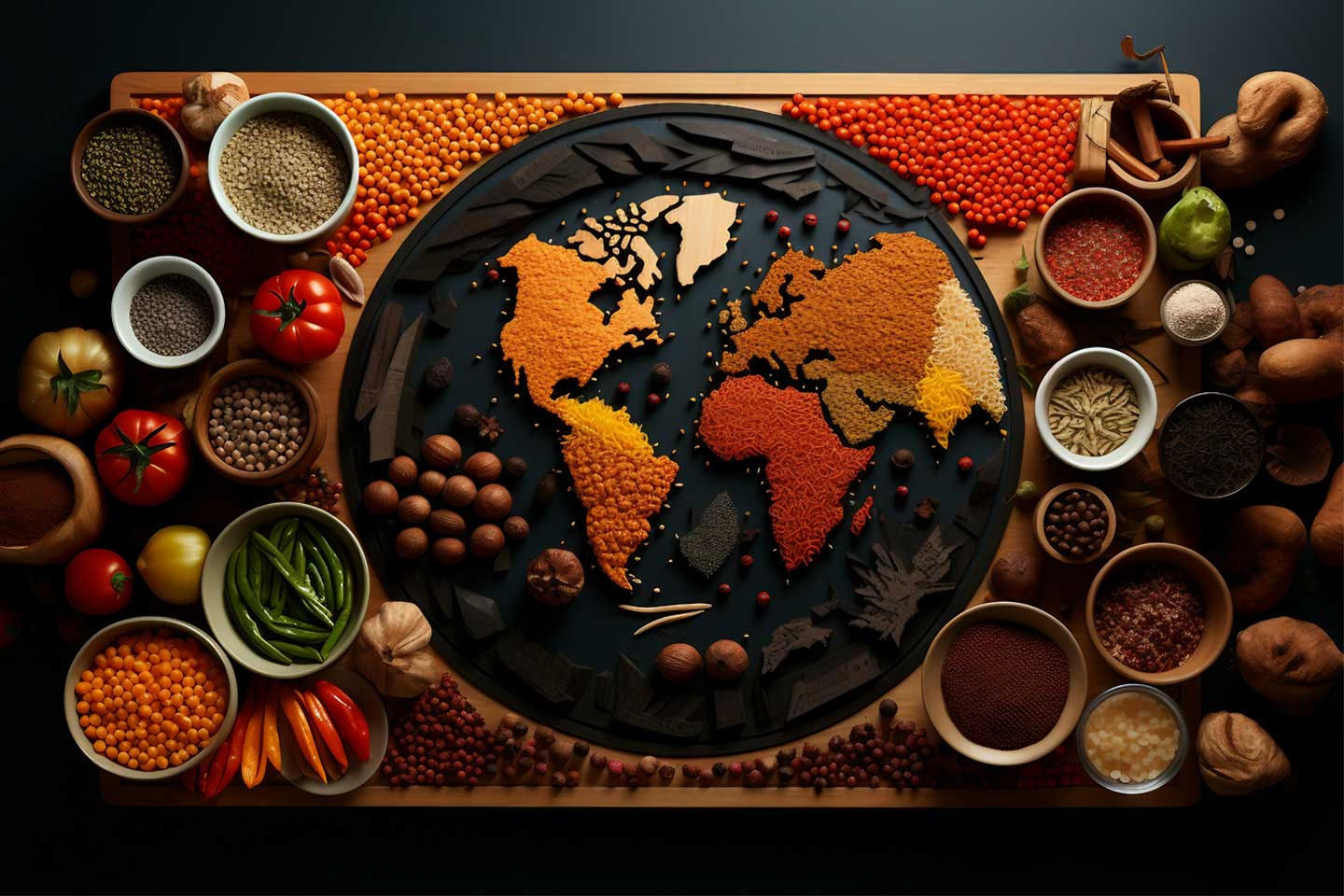
The food market in 2024 is experiencing an exciting transformation, with sustainability, health-conscious choices, and culinary innovation taking center stage. From the rise of plant-based foods to the integration of global flavors, here’s a closer look at the key trends that are shaping the food industry this year.
1. The Rise of Plant-Based and Clean Eating
Plant-based eating continues to soar in popularity, driven by a demand for healthier and more sustainable food options. Consumers are moving toward simpler, whole-food alternatives like mushrooms, lentils, and walnuts, which provide nutritional benefits without the complexity of processed substitutes. This shift is also part of a broader “clean eating” trend, where people are opting for food with fewer artificial ingredients, prioritizing transparency and organic sourcing. As this trend gains momentum, the focus is on providing nourishing meals that are both good for the body and the environment.
2. Sustainability: A Core Focus
Sustainability is a major theme in the 2024 food market. From water conservation to ethical sourcing, the demand for eco-friendly products is growing rapidly. In particular, food brands are emphasizing sustainable farming practices, such as responsibly sourced seafood and plant-based options that minimize environmental impact. Upcycling food by-products and reducing food waste are also integral parts of the movement, with companies creating innovative ways to repurpose ingredients that would otherwise be discarded.
The emphasis on sustainability is not only about how food is produced, but also about the packaging and transportation processes. Eco-conscious consumers are increasingly prioritizing brands that support environmental stewardship and reduce their carbon footprints.
3. Exploring Global Flavors
2024 is the year of bold, complex flavors as consumers continue to explore cuisines from around the world. Spices and peppers from different regions, including chilies from Latin America and Southeast Asia, are becoming more mainstream in everyday meals. Whether it’s fiery hot sauces or chili-infused snacks, these global flavors are being integrated into beverages, sauces, and packaged goods, offering an exciting array of taste experiences.
This trend is not just limited to traditional dishes but also finds its way into fusion cuisine, where flavors from diverse cultures are combined to create new and innovative food experiences. The ongoing interest in global flavors reflects a desire for variety and culinary exploration.
4. Small Luxury and Indulgence
In the world of food, small luxuries are on the rise. Consumers are seeking affordable indulgences in the form of single-serving gourmet items, such as artisanal chocolates, premium cheeses, and small-batch snacks. These products offer the luxury of high-end ingredients in a more accessible format, allowing consumers to indulge without committing to large quantities. This trend highlights a shift towards quality over quantity, with many opting for richer, more flavorful experiences rather than mass-produced options.
The focus on indulgence also ties into the broader movement of mindful eating, where people are increasingly choosing high-quality treats that offer a greater sense of satisfaction in smaller portions.
5. The Future of Food: Innovation and Technology
The future of food is not only about what we eat but also about how we produce and experience food. In 2024, technological innovations are reshaping the industry. Lab-grown meats, plant-based innovations, and precision fermentation technologies are being explored to meet the growing demand for sustainable food sources. These advances promise to make food production more efficient while reducing the environmental impact of traditional farming practices.
In addition, smart kitchens and AI-driven food tech are becoming more prevalent, making food preparation easier and more convenient. With the growing interest in personalized nutrition, these technologies enable consumers to tailor their meals based on their unique dietary needs.
Conclusion
The food market in 2024 is dynamic, with trends centered around sustainability, innovation, and a greater appreciation for global flavors. As consumers become more conscious of the environmental and health impacts of their food choices, the industry continues to evolve. From plant-based options to cutting-edge technology, the future of food promises to be diverse, exciting, and more sustainable than ever before.